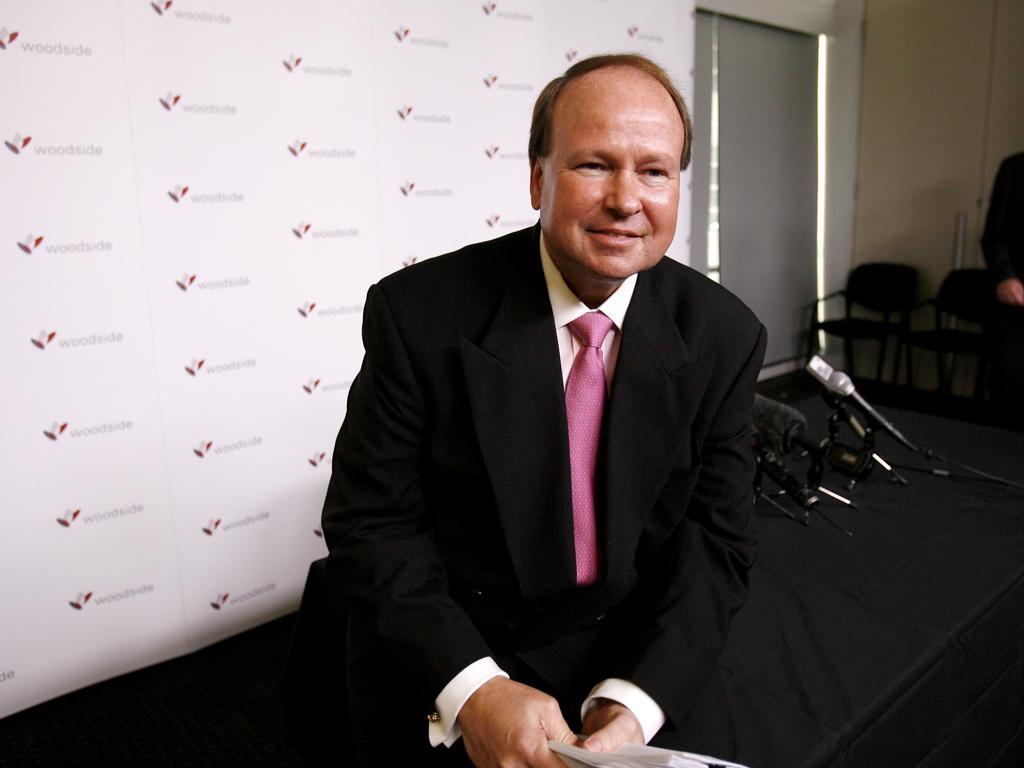Woodside doesn’t want ‘wrong’ LNG neighbours for $34bn NW Shelf LNG
Woodside may cut its own deal for the $34bn NW Shelf LNG plant, avoiding an equity raising, as Chevron prepares to exit.

Woodside Petroleum may cut its own deal for the $34bn North West Shelf LNG plant in Western Australia, avoiding the need for an equity raising, and indicated more energy majors may be looking to join Chevron in cashing out of the facility.
The Perth-based energy major could flex its own pre-emptive rights and hinted it may look at a deal where it takes part of Chevron’s stake in tandem with a new buyer. Analysts have suggested Chevron could reap between $US3bn-$US4bn for its 16.7 per cent share of Australia’s largest LNG plant.
“You don’t want your neighbours to put up a for sale sign and get the wrong people moving in next door. So if we‘ve got a choice around who moves in and we can somehow influence that process then we will. That’s what pre-emption rights are there for,” Woodside chief executive Peter Coleman told the Annual Credit Suisse Australian Energy Conference on Tuesday.
“If Woodside is in some way able to construct something that suits everybody, if there’s a way that we can participate in that and get a better outcome for Woodside, then yes we‘ll be at the table participating. Price is the primary determinant.”
While the Woodside chief did not elaborate who the “wrong neighbours” might be, the comment may represent both a gibe at outgoing partner Chevron after years of spats between the partners, but also a reference to its own carefully laid plans to use the NW Shelf as an anchor for its next leg of growth.
Woodside hopes to process gas from its long-delayed Browse field through NW Shelf, but Chevron and BHP were thought to be reluctant to sanction the deal.
With Chevron out of the equation, Woodside will hope a new partner will back its own self-interest and ambition for the facility.
Analysts have cautioned that Woodside may be forced to tap shareholders for equity if it decides to buy Chevron‘s stake and also proceed with its deferred Scarborough gas project.
However, Mr Coleman said “cutting up” the NW Shelf acquisition could alleviate the need to tap shareholders.

“There are also ways of cutting the acquisition up. So don’t think linearly around the acquisition. Think that the acquisition itself may have other elements to it that help with respect to the potential for an equity raising. Clearly we‘ve thought through this and we’ve been thinking through this for a long time as we would on any asset that is such an important one.”
Former Woodside boss Don Voelte told The Australian on Saturday that Chevron’s move may spark a bigger ownership reshuffle with energy giants BP and Shell potentially in line to follow the US major by exiting Australia’s biggest gas export facility.
Chevron’s move to sell out its one-sixth interest at a time of ongoing volatility in the energy sector may have reflected its desire to be first in line to sell out with other joint venture partners also weighing the futures of their stakes, Mr Coleman said.
“Maybe Chevron formed a view that there were other joint venturers that were starting to position themselves to sell assets globally of which NW Shelf may have been one of those. So maybe they formed a view that they‘d rather be first one in the queue on that rather than following someone else,” Mr Coleman said.
“Once you start following somebody else, they‘ve already set the price and there are only so many buyers of these assets globally and a tier one asset of this size and the capacity and capability to take it on. So I think all of those things came into the mix as they were looking at it and saying do we want to follow somebody else or lead into this process. And they’ve obviously decided to lead.”
Woodside operates the facility in a joint venture with BHP, BP, Chevron, Shell and Mitsubishi with Mitsui.
The terminal is facing the depletion of its gas reserves in the next few years, forcing the facility to move to a new tolling model where it will process gas from third parties for the first time, sparking a shake-up among the owners of the facility.
An infrastructure investor is a likely suitor for Chevron’s stake with the tolling model unlikely to be as attractive to an oil and gas producer looking at M&A opportunities, according to the Woodside chief. Tyre-kickers will not be allowed into a data room, with Chevron likely to keep a high bar to any potential suitors.
“It’s unlikely to be another oil and gas company. I think it’s going to be set up to be someone who looks at the asset itself as an infrastructure type asset given the upstream is pretty much been de-risked and it will be infrastructure style returns. They will try and leverage the asset and get costs out of it,” Mr Coleman said. “So there‘ll be a lot of people put their hand up and express an interest but I’m not sure that those who express an interest will be invited into a data room.”
While Chevron’s plan to sell has kickstarted a realignment, Woodside said there was still more work to be done as the venture readjusts to the new model.
“You need more than one party to sell before you really start to get control of significant influence in the NWS. You‘ll need multiple parties for that to occur,” Mr Coleman told the conference. “I think the NW Shelf demonstrated over recent times it’s a difficult joint venture to work with commercially. And before anybody puts a dollar into the NW Shelf, that commercial structure is going to have to change and the parties involved are going to have to change their attitudes to the way they look at commercial deals.”




To join the conversation, please log in. Don't have an account? Register
Join the conversation, you are commenting as Logout